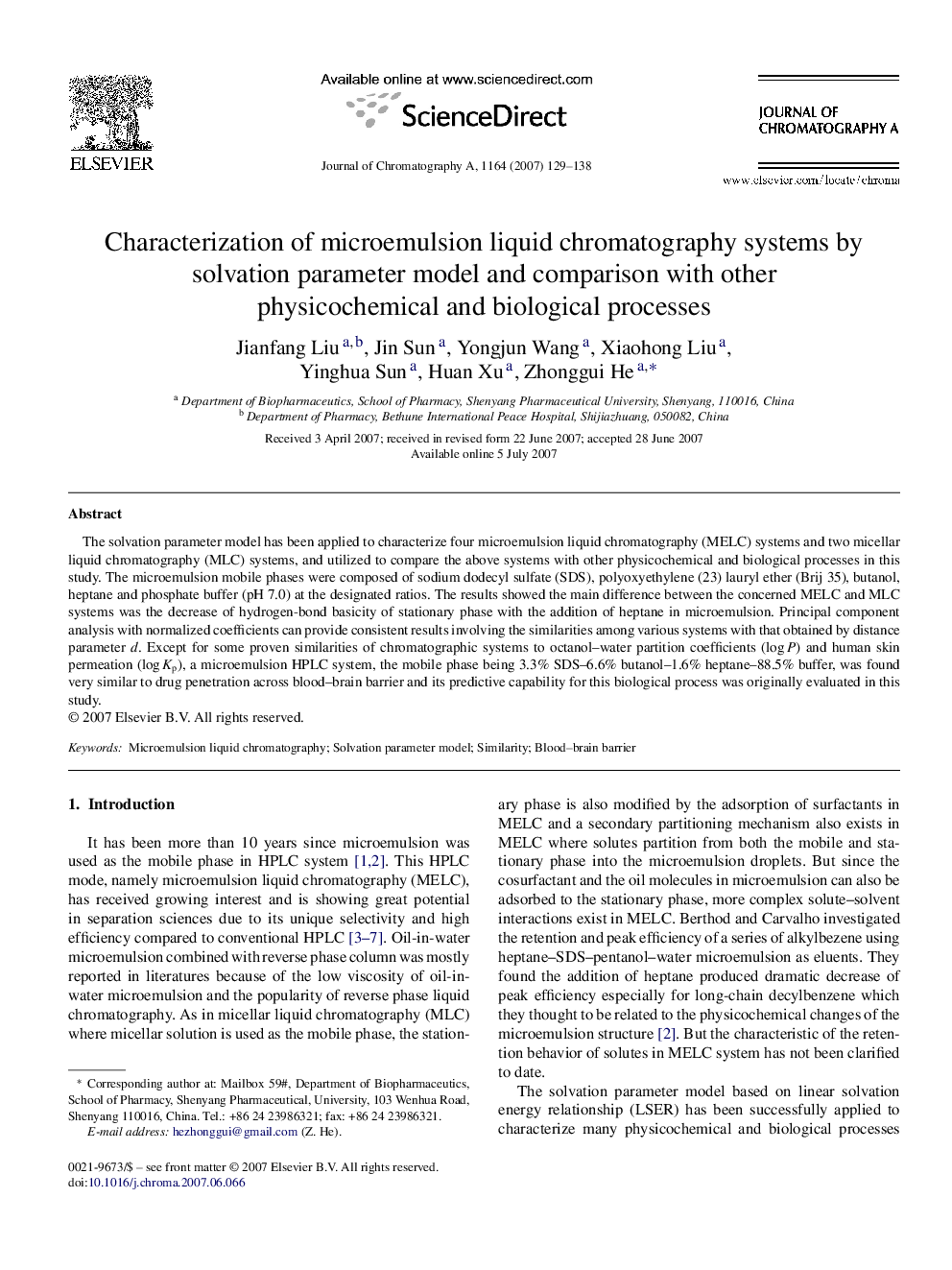| Article ID | Journal | Published Year | Pages | File Type |
|---|---|---|---|---|
| 1208814 | Journal of Chromatography A | 2007 | 10 Pages |
The solvation parameter model has been applied to characterize four microemulsion liquid chromatography (MELC) systems and two micellar liquid chromatography (MLC) systems, and utilized to compare the above systems with other physicochemical and biological processes in this study. The microemulsion mobile phases were composed of sodium dodecyl sulfate (SDS), polyoxyethylene (23) lauryl ether (Brij 35), butanol, heptane and phosphate buffer (pH 7.0) at the designated ratios. The results showed the main difference between the concerned MELC and MLC systems was the decrease of hydrogen-bond basicity of stationary phase with the addition of heptane in microemulsion. Principal component analysis with normalized coefficients can provide consistent results involving the similarities among various systems with that obtained by distance parameter d. Except for some proven similarities of chromatographic systems to octanol–water partition coefficients (log P) and human skin permeation (log Kp), a microemulsion HPLC system, the mobile phase being 3.3% SDS–6.6% butanol–1.6% heptane–88.5% buffer, was found very similar to drug penetration across blood–brain barrier and its predictive capability for this biological process was originally evaluated in this study.
